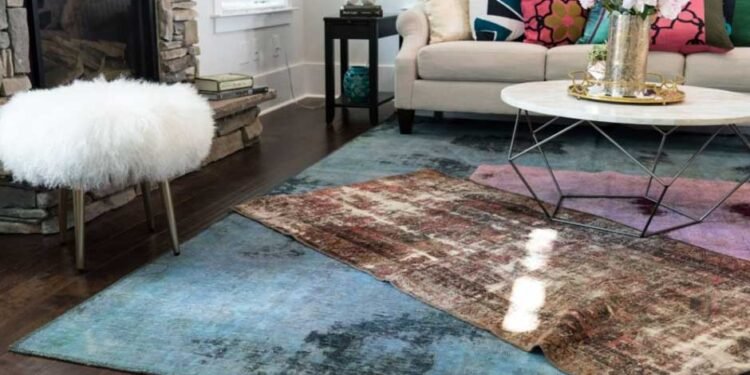Layering rugs over carpet is a trend that’s gained considerable traction in interior design circles. It’s a fantastic way to add texture, warmth, and personality to any space. But as straightforward as it sounds, layering rugs on carpet requires a bit of finesse to get that cosy, stylish look just right. Whether you’re looking to refresh your living room, add a pop of colour to a bedroom, or create a welcoming vibe in your hallway, these tips will help you master the art of layering rugs on carpet.
Why Layer Rugs on Carpet?
You might be wondering, Why layer a rug on carpet in the first place? The answer lies in the unique blend of comfort and style this design technique offers. Here are a few reasons why you should consider layering rugs:
- Enhanced Texture: Carpet provides a soft, plush base, while a rug can add a different texture or pattern that enhances the room’s aesthetic.
- Colour and Pattern Play: Layering allows you to introduce bold patterns, vibrant colours, or intricate designs that might be overwhelming if applied to the entire floor but work perfectly in smaller doses.
- Zoning a Space: In open-plan areas, rugs can help define different spaces, such as a reading nook or a seating area, making the room feel more organised and intentional.
Tips for Layering Rugs on Carpet
- Start with a Low-Pile Carpet: If you’re layering rugs on carpet, a low-pile or looped carpet works best. The firm, flat surface allows the rug to sit nicely without bunching up or sliding around. If your carpet is too plush, it can make the rug look lumpy and uneven.
- Choose the Right Rug: When selecting a rug to layer on carpet, opt for a contrasting texture. For instance, a flat-weave or kilim rug over a plush carpet creates visual interest and avoids the room feeling too heavy. Alternatively, a shag rug over a flat, low-pile carpet adds luxurious depth.
- Anchor Your Rug: To prevent slipping, make sure your rug is anchored by furniture, such as a sofa or coffee table. If your rug isn’t heavy enough to stay in place, use a non-slip rug pad designed for carpets – this will not only keep your rug secure but also protect your carpet from wear.
- Balance Proportions: Proportion is key when layering rugs. A small rug on a large carpeted area can look awkward, so ensure your rug is large enough to fit comfortably within the space. Ideally, it should be big enough to sit under at least the front legs of your furniture.
- Play with Patterns and Colours: Don’t be afraid to mix and match patterns, but keep it cohesive. If your carpet is a neutral tone, you have the freedom to go bold with the rug. Conversely, if your carpet already features a pattern, choose a solid or subtle patterned rug to avoid visual clutter.
- Maintain Cleanliness: One concern when layering rugs on carpet is the accumulation of dust and dirt. To keep your space looking fresh, regular vacuuming is a must. And don’t forget about the carpet underneath – periodic deep cleaning is essential to maintain both hygiene and aesthetics. You can ensure your carpet stays pristine by considering professional carpet cleaning services, which effectively remove trapped dirt and refresh the fibres.
Styling Ideas for Every Room
Layering rugs on carpet can work beautifully in any room of your home. Here’s some inspiration:
- Living Room: Try a large jute rug layered with a colourful Moroccan-style area rug to create a cosy, bohemian vibe.
- Bedroom: Place a plush sheepskin rug over a flat-weave carpet beside your bed for an inviting, soft landing spot.
- Home Office: Add a small, patterned rug under your desk to delineate your workspace and add a splash of colour to your office.
Final Thoughts
Layering rugs on carpet is a simple yet impactful way to elevate your home’s interior design. By choosing the right combination of textures, colours, and sizes, you can create a look that’s both stylish and comfortable. Remember, balance is key – don’t be afraid to experiment with different rug styles until you find the perfect combination that reflects your personal taste.
Layering rugs on carpet isn’t just about design; it’s about creating a home that feels welcoming, comfortable, and uniquely yours.












